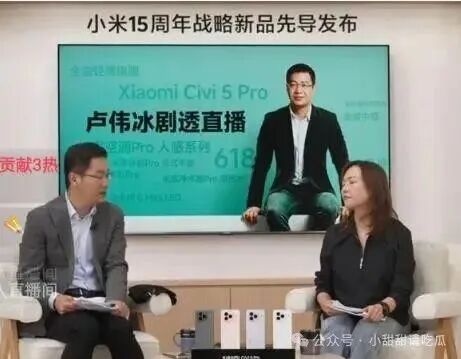The Xiaomi Technology Park in Beijing is brightly lit at midnight, with Lei Jun holding the newly successful “Xuanjie O1” chip in his palm. This small square piece, weighing less than 1 gram, embodies over 2,000 days and nights of hard work from Xiaomi’s engineers. As the live broadcast camera sweeps across the chip’s surface etched with the “XM” logo, the comments section erupts—China’s smartphone landscape is about to change!
Hold on, this is not an ordinary chip. The SoC (System on Chip) is essentially the brain of a smartphone, and there are only a handful of players globally who can compete. According to IDC data from 2023, 85% of the global smartphone SoC market is dominated by Apple’s A series, Qualcomm’s Snapdragon, and MediaTek’s Dimensity. Now, Xiaomi has squeezed into this “high-end club,” which is even more exciting than their phones selling out.

Looking back at the past, you’ll understand. When Xiaomi launched the Surge S1 in 2017, the 28nm process was already not a new thing in the industry. After seven years of hard work, this time TSMC’s N4P process has directly increased the transistor density to 177 million per square millimeter, an 11% performance improvement over the previous 5nm process. A broker friend secretly told me that the AI computing unit of the Xuanjie O1 is stacked with dual NPUs, scoring directly at 92% of the Snapdragon 8 Gen3, while power consumption has decreased by 15%. If this data holds true, Qualcomm might have to hold an emergency meeting overnight.
How much money does it take to play in the chip game? Huawei’s HiSilicon spent 400 billion over ten years just to stabilize its footing. Xiaomi’s approach, however, is quite calculated; from ISP image processing chips to fast-charging chips, they have developed twelve self-researched chips in seven years, carving out a “rural encircling the city” strategy. Don’t doubt it, over 80% of Xiaomi 11 series users are using their self-developed charging chips, and the market education has long been established.

However, the rules of the industry are clear; self-developed SoCs will disrupt others’ livelihoods. In 2023, Xiaomi shipped 146 million phones, and if they can replace 30% of Qualcomm’s orders, they could save at least 2 billion in patent fees each year. No wonder old Wang from the supply chain whispered to me that Qualcomm’s sales director for China has been frequently visiting Xiaomi’s campus lately; this plot is more exciting than a business war drama.
Looking at the process parameters reveals the truth; TSMC’s N4P process is not just a common product. Compared to standard 4nm processes, N4P can increase frequency by 6% at the same power consumption, and the leakage current is reduced to 0.85μA/μm, which is a lifeline for smartphone chips. However, industry expert Zhang poured cold water on me: “If the yield is stuck below 65%, the chip’s cost could drag Xiaomi’s financial report into the red.” This statement makes sense; Samsung’s past lessons with 14nm FinFET yield issues are still fresh.

Lei Jun is playing a big game here. Did you notice? Lu Weibing hinted during the live broadcast that “several products” do not only refer to smartphones. Xiaomi’s ecosystem currently has 210 million IoT devices, and if they can all use their own chips, this story would be more appealing than Jobs’. Why did VIVO’s imaging chip and OPPO’s Mariana chip stall midway? They lack this ecological closed loop.
But is self-developed chips really a universal remedy? Huawei’s scars from sanctions have not healed yet. There are rumors in the industry that Xiaomi’s chip team has already prepared a Plan B, with a backup solution using mature 28nm processes ready to go. The truth of this is hard to discern, but since Lei Jun dares to call chip manufacturing a “life-and-death battle,” he must have a backup plan.

When Lei Jun posted an old photo from ten years ago of the establishment of Pinecone Electronics on Weibo, the engineers in plaid shirts from that photo now have gray hair. Ten years of ice-drinking cannot cool the hot blood—this phrase is perfectly suited for the journey of chip manufacturing. The release of the Xuanjie O1 may just be the prologue, as even Tesla next door has started working on the Dojo supercomputer chip. In my opinion, this chip war has just begun, and the best is yet to come.